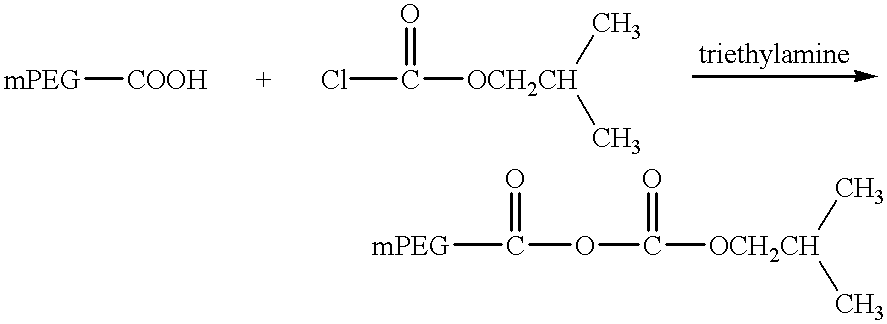Single-chain antigen-binding proteins capable of glycosylation, production and uses thereof
- Summary
- Abstract
- Description
- Claims
- Application Information
AI Technical Summary
Benefits of technology
Problems solved by technology
Method used
Image
Examples
example 1
Synthesis of Asn-linked Glycosylation Sequences in CC49 / 218 and Expression of the Glycosylated SCA
[0236] The CC49 monoclonal antibody was developed by Dr. Jeffrey Schlom's group at Laboratory of Tumor Immunology and Biology, National Cancer Institute. It binds specifically to the pan-carcinoma tumor antigen TAG-72 (see, Muraro, R., et al., Cancer Res. 48:4588-4596 (1988)). The SCA gene version of CC49 has been described by Milenic et al., Cancer Res. 51:6363-6371 (1991). Oligonucleotide-directed mutagenesis was employed to create Asn-linked glycosylation sequences in CC49 / 218 (the 218 linker is described in the "Detailed Description of the Preferred Embodiments" section, supra), as shown in the DNA sequences presented in FIG. 1 (i.e., (1) two V.sub.L changes; (2) two V.sub.H changes; (3) one linker change; (4) one C-terminal change). Oligonucleotide-directed mutagenesis was also employed to create two or three tandem or overlapping glycosylation sites in CC49 / 218. Additionally, muta...
example 2
Synthesis of Asn-linked Glycosylation Sequences in Other SCAs
[0265] Using the methods described in Example 1, oligonucleotide-directed mutagenesis is employed to create Asn-linked glycosylation consensus sequences in the identified loop regions of a Kabat consensus V.sub.KI / 218V.sub.HIII SCA, C6.5 / 218 SCA, and A33 / 218 SCA, as shown in FIGS. 6-8, respectively (i.e., (1) two V.sub.L changes; (2) two V.sub.H changes; (3) one linker change; (4) one C-terminal change; or (5) combinations thereof). In V.sub.KI / 218V.sub.HIII SCA and C6.5 / 218 SCA, proline residues flanking the tripeptide sequence in the +3 position are changed to alanines, as recommended by the compilation of Gavel, Y., and von Heijne, G., Protein Engng. 3:433-442 (1990). Amino acid assignments of the Kabat consensus V.sub.KI / 218V.sub.HIII SCA and A33 / 218 SCA are according to Kabat et al., Sequences of Proteins of Immunological Interest, pp. 108 & 331, 5th ed., U.S. Dept. Health and Human Services, Bethesda, Md. (1991), whe...
example 3
[0267] Example 3
Purification of Glyco-CC49
[0268] The Pichia cells were harvested from a fermenter and centrifuged at 5000 rpm for 40 minutes. The clarified medium was collected and filtered through a 0.22 um filter. The sample was dialyzed against water with a membrane of molecular weight cut off of 3500 to a final conductivity of less than 1 mS. A cation exchange column (Poros-HS) was equilibrated with 15 mM Tris-Acetate at pH 6.15. The sample was adjusted to pH 6.2 and loaded onto the column. Glyco-CC49 was then eluted out with a salt concentration of 0.15 M NaCl in Tris-acetate buffer pH 7.4. It was then passed through a Poros-HQ column equilibrated with 0.15 M NaCl. Tris-acetate buffer pH 7.4. The flow through material was then processed on a size exclusion column (Pharmacia, Superdex-75). The fractions corresponding to a molecular weight of 25-35 kDa were collected.
PUM
| Property | Measurement | Unit |
|---|---|---|
| Electric charge | aaaaa | aaaaa |
| Digital information | aaaaa | aaaaa |
Abstract
Description
Claims
Application Information
 Login to View More
Login to View More - R&D
- Intellectual Property
- Life Sciences
- Materials
- Tech Scout
- Unparalleled Data Quality
- Higher Quality Content
- 60% Fewer Hallucinations
Browse by: Latest US Patents, China's latest patents, Technical Efficacy Thesaurus, Application Domain, Technology Topic, Popular Technical Reports.
© 2025 PatSnap. All rights reserved.Legal|Privacy policy|Modern Slavery Act Transparency Statement|Sitemap|About US| Contact US: help@patsnap.com



